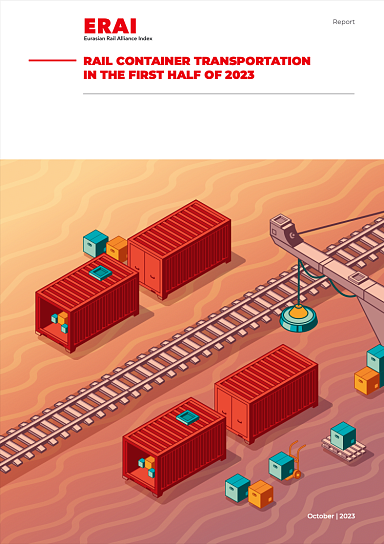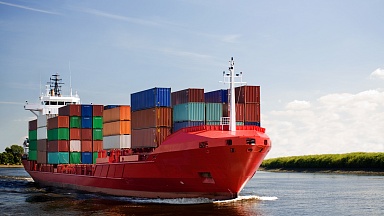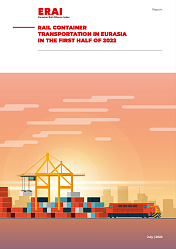The first half of 2023 has served as an important stage, reflecting the adaptation of the Eurasian railway route to new realities. The general results of the reporting period show an increase in the volume of transported cargo. In total, in the first half of 2023, 350.7 thousand TEUs travelled along the route, more than during the same period last year. These indicators reflect the work done to maintain the stability of the Eurasian railway route and adapt to external shocks.
In October 2022, there was a reverse transition of the cost advantage from rail to sea transport. The sea freight index between China and Europe in the period from January to June 2023 fell from $2,086 to $1,576 per FEU, although back in June 2022 its value was $7,376 per container.
Against this background, the indicators of the ERAI railway container transportation index for the same period showed ultra-low volatility: f rom $2,987 per FEU in June 2022 to $2,944 in June 2023. Thus, against the backdrop of new international upheavals, the railway has confirmed its title as the most stable mode of transport, especially over the long term. For the Eurasian railway route, such changes mean a return of the global market to what predominated before 2020.
At the end of the first half of 2023, the total volume of cargo transported along the Eurasian railway route across all segments amounted to 350.7 thousand TEUs, which is 44.2 thousand TEUs more than for the same period in 2022. It is characteristic that transit transportation in the China-Europe-China route accounted for 114.1 thousand TEUs, which is 32.5% of all transported cargo. Thus, a restructuring of transportation took place, where the drop in China-Europe- China transit volumes was replaced by increased imports to Russia from China and exports from Russia and the EAEU countries to China.
Along with the reduction in overall transit indicators, there was a drop in indicators in certain directions. Transportation in the China-Europe direction fell to slightly more than half (51.25%) what it had been: from 143.9 thousand TEUs in the first half of 2022 to 73.7 thousand in the first half of 2023. In the opposite Europe-China direction, a similar trend is observed: from 77.3 thousand TEUs in the first half of 2022 to 40.3 thousand TEUs during the first half of 2023.
Simultaneously with the significant drop in China-Europe-China traffic in the first half of 2023, there was an increase in import-export traffic between China and the EAEU countries, both in aggregate and separately, in the Eurasian railway space, relative to the same period in 2022. According to UTLC ERA’s data, the highest growth rates in transportation through the Eurasian corridor are observed along the EAEU — China (+248.3%), as well as China — Russia (+122.3%) route. An absolute increase in the China-Belarus direction is also visible (+26.6 thousand TEUs).
The first half of 2023 clearly demonstrated how the transport and logistics market is being transformed under the influence of external factors. The nature of these changes, caused both by the objective economic indicators of the countries engaging in transportation and by the international political situation, indicates a high level of adaptability and constant demand for rail transportation.
The second half of 2023 will reveal whether it is possible for the trends that have already begun to continue, and whether opportunities to increase transportation will be realized.




